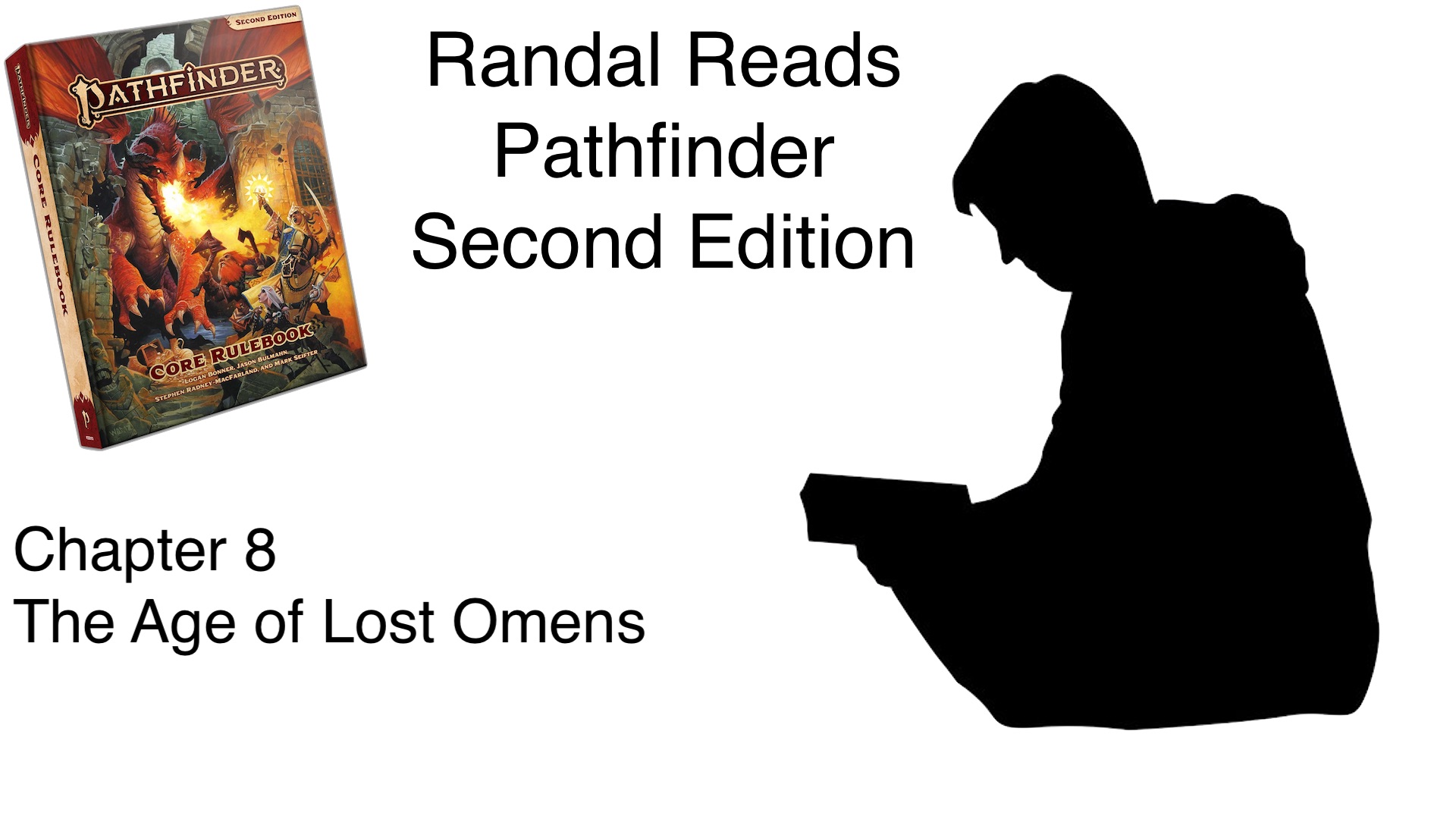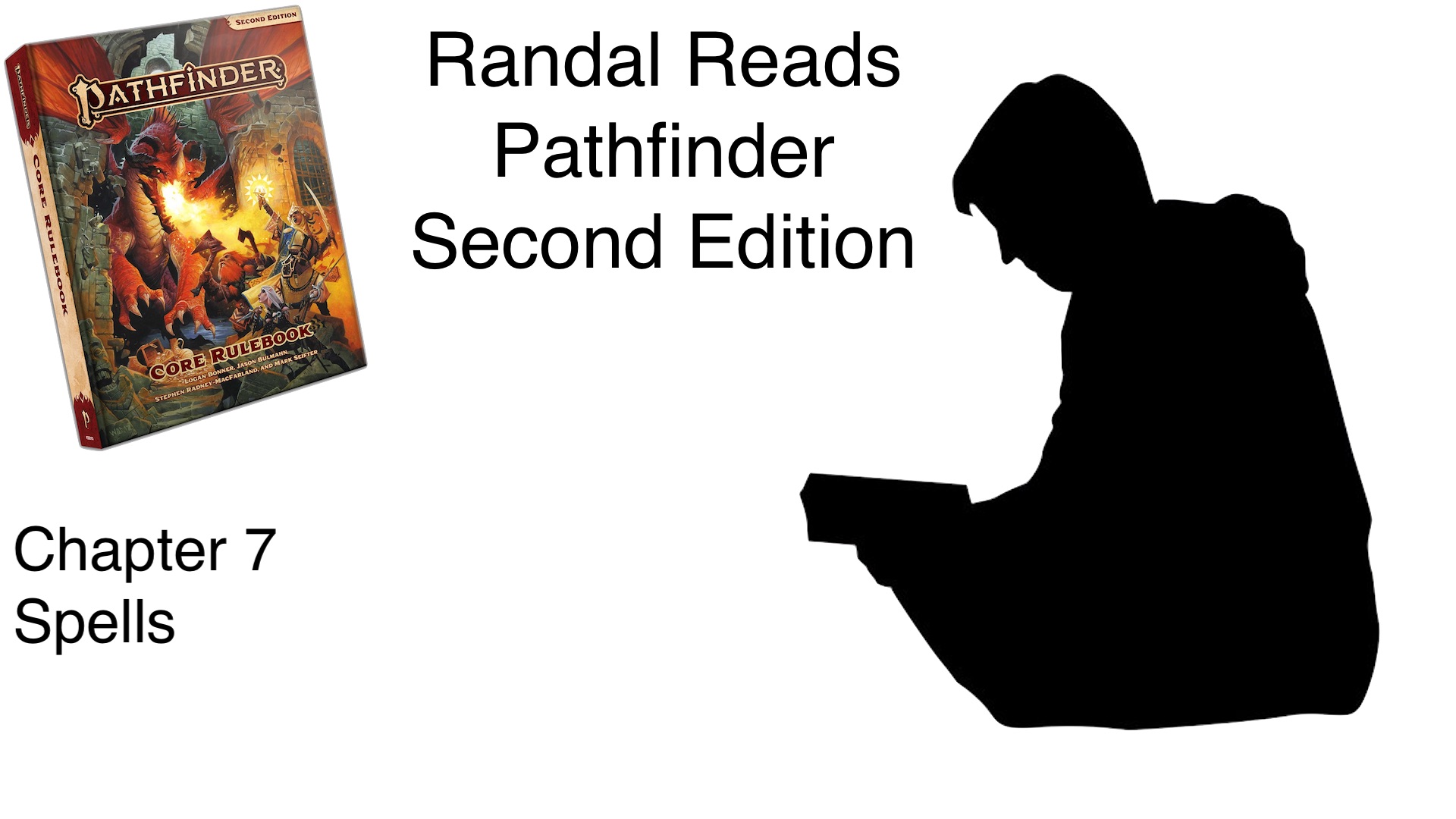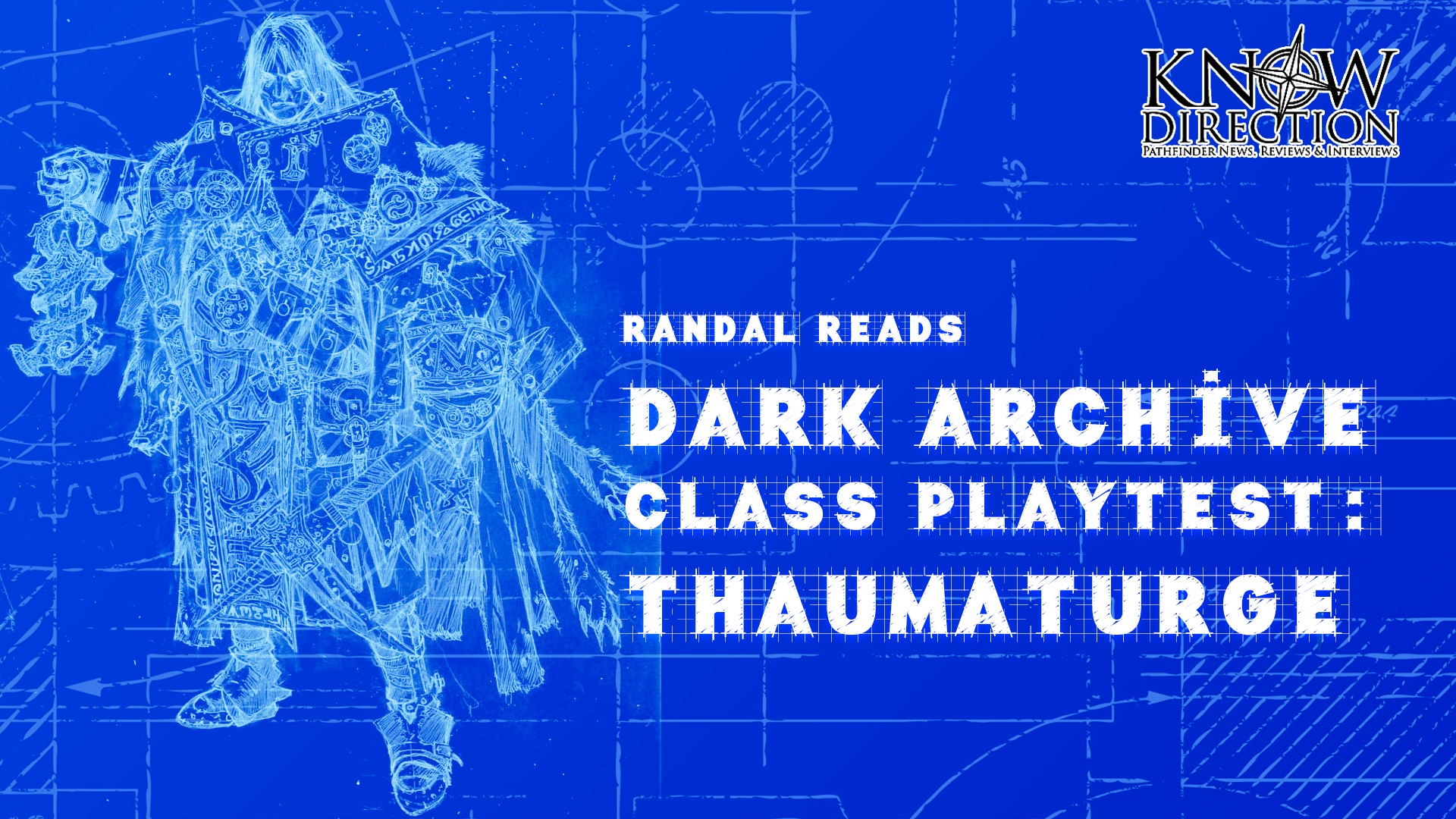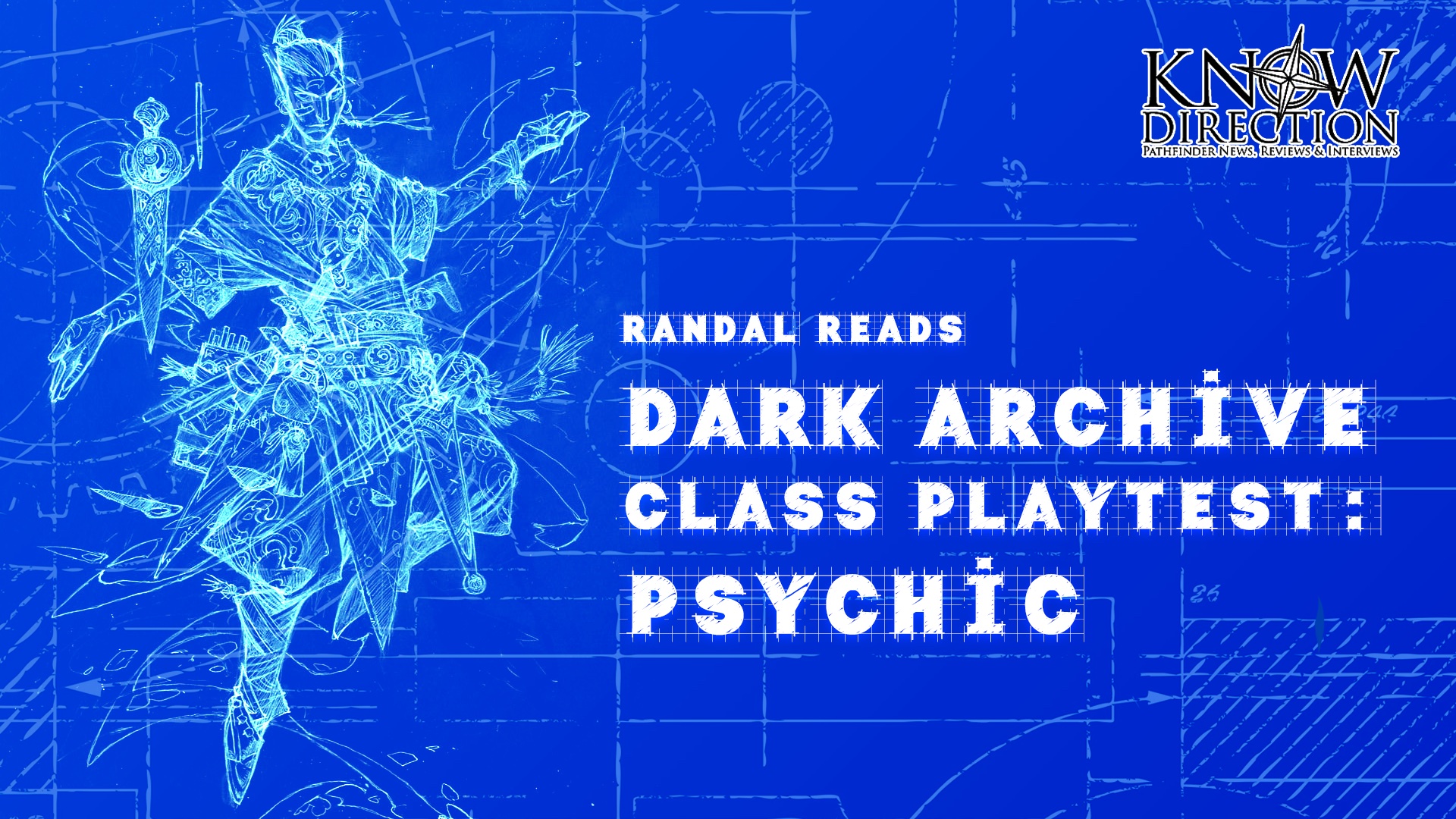Hello, and welcome to a special review of Pathfinder Second Edition. With most of the Know Direction team at Gen Con 2019, gluttonously consuming second edition in all its glory, most of our blogs are on hiatus. I, Randal, writer of Groundbreaking and Terraforming, am here to fill that void with a chapter by chapter review of the new core rulebook. This review is intended to simply be my take on the material as I read it, as first thoughts and impressions, and not a hard comparison of changes from first edition.
Chapter 8 – The Age of Lost Omens
I love the world of Golarion. I haven’t had the time to dive as deep into the lore as I would like, but I do enjoy learning more and more. This first page was a great refresher for the Inner Sea. The maps that followed were really cool, I liked seeing the globe and the land masses from those different perspectives. It really helped drive home how big the world is. I thought they did a pretty decent job of touching on the other planes in a simple enough manner that new players are made aware of them without giving them too much information at once. I kind of liken the information they gave to the amount of information a person on Golarion might have after reading a pamphlet for a local college course about planar cosmology. I also appreciated the sidebar about time, months, and days; I know these from some of my projects, but knowing it is in the core for others to read (and easy to find) is great.

The Inner Sea Region
Each page was a half-page of text underneath a gorgeous piece of art intended to be an iconic view of the region being discussed. For myself, I found these to be a mixed bag. I know the book was long and they were tight on space, but they could have just cut this knowing that the next book out is the Lost Omens World Guide; I know they need to whet appetites as well as not make assumptions about people buying books. Ultimately, I found them all to be a good reminder to myself of things I remembered, had forgotten, or need to look up; also some spoilery things I need to remember have now become canon. The regions are broken out as follows: Absalom and Starstone Isle, Broken Lands, Eye of Dread, Golden Road, High Seas, Impossible Lands, Mwangi Expanse, Old Cheliax, Saga Lands, Shining Kingdoms
Cultures
 While reading the ancestries, and seeing ethnicities only in the Human section, it bugged me that we didn’t get ethnicities for the non-humans. I am no longer upset by that. This section lists the major human ethnicities that we know, such as Taldan, Ulfen, Varisian, but it also has a section on each of the other ancestries to describe their common ethnicities, such as ergasken dwarves, aiudeen elves, and feychild gnomes. While they don’t add languages known as the human ethnicities do, those ancestries already add an ancestry language beyond common, so I feel like it works out in the end. Speaking of languages, the included list of languages by region is super handy.
While reading the ancestries, and seeing ethnicities only in the Human section, it bugged me that we didn’t get ethnicities for the non-humans. I am no longer upset by that. This section lists the major human ethnicities that we know, such as Taldan, Ulfen, Varisian, but it also has a section on each of the other ancestries to describe their common ethnicities, such as ergasken dwarves, aiudeen elves, and feychild gnomes. While they don’t add languages known as the human ethnicities do, those ancestries already add an ancestry language beyond common, so I feel like it works out in the end. Speaking of languages, the included list of languages by region is super handy.
Creatures
Taking the time to call out important creatures was something I didn’t expect. Not sure why, it fits well with the other contents of the chapter, but it surprised me. I was happy to see it, as it reminded me of a some creatures and plots that I had forgotten about (from various adventures, APs, and such). I would also argue that it gives us a glimpse of the playable ancestries we can expect in future releases! While I don’t expect to see access to alghollthus, demons, devils, dragons, genies, or giants, I think the rest of the list is fair game. We have goblins, we know we are getting hobgoblins, leshies, lizardfolk, and planar scions, so why not gnolls, kobolds, orcs, and serpentfolk?
Factions
 Another section I was really glad to see, but also spoilery for somebody that hasn’t read all the APs. I think this is a good reminder for GMs like myself, but also a great way to introduce new players and GMs to the various factions that players can know and learn about to help immerse them in the world. Provide GMs with anchors for plot hooks and players with goals, be they fighting with or against one of the factions. The symbols/logos for each group is a great little simple piece of art to show the players during game time to add that extra bit of weight to the plot or story. Factions listed are: Aspis Consrtium, Bellflower Network, Esoteric Order of the Palatine Eye, Eagle Knights, Firebrands, Free Captains, Hellknights, Knights of Lastwall, Lion Blades, Magaambya, Night Heralds, Pathfinder Society, Red Mantis, and Sczarni.
Another section I was really glad to see, but also spoilery for somebody that hasn’t read all the APs. I think this is a good reminder for GMs like myself, but also a great way to introduce new players and GMs to the various factions that players can know and learn about to help immerse them in the world. Provide GMs with anchors for plot hooks and players with goals, be they fighting with or against one of the factions. The symbols/logos for each group is a great little simple piece of art to show the players during game time to add that extra bit of weight to the plot or story. Factions listed are: Aspis Consrtium, Bellflower Network, Esoteric Order of the Palatine Eye, Eagle Knights, Firebrands, Free Captains, Hellknights, Knights of Lastwall, Lion Blades, Magaambya, Night Heralds, Pathfinder Society, Red Mantis, and Sczarni.Religion
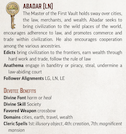 This chapter is rounded out with a list of the core deities. I like the new layout of the deity blocks, although I think it is essentially the same as before, just modified for the changes in how followers/devotees gain powers. The descriptions we expect to read are now followed by edicts, anathema, and alignment options. Devotee benefits list the divine font option (heal or harm), divine skill, favored weapon, domains, and cleric spells granted. Simple to read, yet efficient in layout.This new format of Devotee Benefits looks to be modular enough to work with as yet unreleased divine classes.
This chapter is rounded out with a list of the core deities. I like the new layout of the deity blocks, although I think it is essentially the same as before, just modified for the changes in how followers/devotees gain powers. The descriptions we expect to read are now followed by edicts, anathema, and alignment options. Devotee benefits list the divine font option (heal or harm), divine skill, favored weapon, domains, and cleric spells granted. Simple to read, yet efficient in layout.This new format of Devotee Benefits looks to be modular enough to work with as yet unreleased divine classes.
Tune in tomorrow for Chapter 9 – Playing the Game

